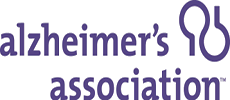RESULTS
These web-pages illustrate the work done until August 2013 and presented during the hybrid in-person and remote (webinar) workshops held in Toronto on April 11th 2010 (download the slide show and minutes), in Honolulu on July 14th 2010 (download the slide show and minutes) and on April 13th 2011 (download the slide show and minutes), in Paris on July 20th 2011 (download the slide show and minutes), in New Orleans on April 24th 2012 (download the slide show and minutes), in Vancouver on July 18th 2012 (download the slide show and minutes), in San Diego on March 19th 2013 (download the slide show and minutes), and in Boston on July 17th 2013 (download the slide show and minutes)
The project has been funded for three years by the Alzheimer's Association starting from September 1st 2010.
The twelve most frequently used protocols for manual hippocampal segmentation have been selected from the Alzheimer's Disease (AD) literature; anatomical landmarks were extracted and integrated by the protocols authors when necessary (download tables); hippocampi from two sample brains - a representative AD patient and a healthy control from the Alzheimer's Disease Neuroimaging Initiative (ADNI) database - were segmented following all the 12 protocols and the accuracy of the interpretation of the protocols was checked during interactive webinars with the protocols authors (download slide kits); anatomical landmarks certified by the protocols authors were tabulated (download table) and semantically harmonized (download table), the differences were operationalized into segmentation units summarizing all the variability among protocols (download table) and a 3D illustration of the segmentation units was developed (download 3D illustration).
We selected 77 subjects from the ADNI dataset (31 controls, with normal CSF Abeta1-42 level, 23 Mild Cognitive Impairment -MCI- and 22 AD with abnormal CSF Aβ1-42 level) and for each subject we segmented separately each segmentation unit on the left and right hippocampi in order to evaluate the contribution of each segmentation unit to volumetric differences between groups. Re-test reliability values were also quantified, using an ADNI sample of 20 subjects (8 controls, 9 MCI and 3 AD), chosen for representing all severity degrees of hippocampal atrophy (at the visual scale by Scheltens et al., 1992).
The results of this quantitative analysis have been used to build the Delphi Questionnaire, to allow a panel of international experts to converge to a consensual definition for the harmonized protocol based on quantitative evidence. An internet platform will allow participants to connect and provide their opinion on a standard format.
The Harmonized Protocol for Manual Segmentation has been agreed among an international panel of 16 experts, after the completion of five Delphi rounds (April 2012). An illustrative video can be downloaded here.
Five experts in manual hippocampal segmentations were recruited to segment the 40 benchmark hippocampi as "Master Tracers". These sample will be used as the gold standard for training/testing of future tracers and automated segmentation algorithms.
We recruited 21 Naïve Tracers for the Validation of the Harmonized Protocol. All of them have completed the segmentation of the 40 hippocampi based on local protocols for the Validation Phase-1. The web-based system for tracer qualification has been developed and it is operative.
Through this web-platform, 14 out of 20 Naïve Tracers have completed the Qualification Phase, which consists in segmenting the benchmark set of hippocampi following the Harmonized Protocol.
They also have completed the re-segmentation of the sample of 40 hippocampi, formerly segmented following the local protocol, according to the Harmonized Protocol.
In Validation Phase-2, five expert tracers (the most performant among the 14 Naïve ones) followed the Harmonized Protocol to segment 15 ADNI cases balanced by atrophy and scanner manufacturer and acquired at 3 time points at both 1.5T and 3T, for a total number of 240 hippocampi per tracer.
The Harmonized Protocol will be validated on ADNI images with neuropathological data and its accuracy will be compared with currently used protocols (download the Validation Phase Flowchart).
